While the number of new service stations being built each year has remained pretty stable, last year saw one striking positive change for dealers in the underlying statistics making up this figure. Arthur Renshaw of Experian Catalist reveals that for the most recent 12-month period there was a total of 36 new-build forecourts opened on new-to-industry (NTI) sites,
Renshaw says the total is in line with previous years, but its make-up this year is quite different. In the past few years the vast majority of NTI sites have been developed by supermarkets, and had that trend continued he would have expected about 30 supermarket sites, five dealer sites and one company-owned to make up the latest total of 36 NTI sites. However, while supermarket sites still make up the majority with 21, dealers built 10 of them and the oil companies (BP and Shell) accounted for five.
An additional 30 sites were classified by Experian Catalist as ’reopened’ and Renshaw says the increase of activity by dealers is even more notable here. He explains that many of the reopened sites are much the same as new-to-industry sites because the developer is just using a plot or parcel of land where there has been a service station in the past and is carrying out a complete redevelopment of the site.
More than two-thirds of the reopened sites, 21 out of the 30, were dealer sites, and taking these together with the NTI sites, gives a total of 31 or nearly half of all the new sites. Renshaw says this shows dealers are becoming much more active in developing sites, adding: "There is definitely a trend for dealers opening new sites. We have only had a handful in prior years."
As someone involved in the construction of all types of forecourt structures, Martin Steggles, managing director of Global-MSI, has seen an increase in NTI development by dealers. He says some independents are looking for plots of land where they can build a petrol station. His company has worked with Kay Group, which has developed four NTI sites over the past two years, and he comments: "Kay Group is a good example. They are skilled at finding land."
Global-MSI is involved in the design, manufacture and installation of forecourt structures ranging from the canopies over the petrol pumps, to the sales buildings, car wash buildings and jet wash screens, and although NTI developments are increasing Steggles says the majority of projects are on existing sites. He describes the market as buoyant, adding: "It is being driven by retail. Owners are looking to maximise the space on site either by extending the sales building or replacing it with a larger modern design and bigger sales area. They are concen-trating on that and that’s what’s driving the development rather than the fuel sales."
Even though canopies may be the first part of a forecourt that a motorist sees, Steggles says that many dealers do not see them as a priority if they are developing a site. He explains: "In the main it’s the generic canopy that wins out for cost reasons. If there is money to spend, the operator would rather do it by producing a bigger shop rather than a canopy that draws people in. Often the only thing that distinguishes it from another site is the oil company branding around the outside, but on occasions something different is required. Sometimes operators are looking for a curved canopy or something with glazing or see-through polycarbonate panels that makes a statement. We worked on Wyboston, which was a dramatic-looking canopy, and Sandringham for HKS, and there have been a number of others that have been produced by us over the past few years."
He says the majority of forecourt shops are made using a structural steel frame clad with insulated panels, which have a core of insulation with a thin steel covering on either side. He adds: "It’s a fast method of construction, and also less affected by weather so construction can carry on during the winter months when more traditional forms of brickwork and blockwork have to stop."
Global-MSI’s biggest project in the past year was Applegreen’s new site at Spalding. The company built both the canopy and the large shop building on the site. Another notable project was the canopy for the first self-service Emo Express at Belfast International Airport. Working from architects’ drawings showing what the canopy should look like on elevation and plan, with its footprint and sizes, Global-MSI came up with the structural design and erected the canopy and its supports.
Over the past 15 years the design of forecourts has changed out of all recognition led by the likes of Euro Garages introducing all types of facilities and partner brands onto their sites, and this is epitomised by the latest Forecourt Trader of the Year Award winner, Applegreen’s the M1 motorway service area at Lisburn in Northern Ireland.
Forward thinking
But some architects are already looking ahead to the future and considering how the advent of electric vehicles and charging will affect the design and use of forecourts.
In the US, global architecture and design firm Gensler has teamed up with the Reebok sportswear brand to come up with a concept for 2030. The ’Get Pumped’ partnership suggests that as there will be far fewer customers needing fossil fuel many forecourts will provide charging facilities and while customers are waiting they will be using buildings redeveloped as gyms, shops offering health foods and local produce, and restaurants. Alfred Byun, designer at Gensler, says: "We envision our cities of the future to have a network of fitness oases between home and work where you could stop and recharge more than just your car. Imagine an option to leave the traffic jam to unwind with yoga, get your Crossfit Fix, or pick up a green juice and your weekly farm share all in one place."
But while this concept may seem a long way off, one rural operator in the Cheddar Valley in the UK is seeing the benefit of redeveloping redundant space as a gym. Simon Lunn who runs the BP/Simply Fresh site at Weare, was looking for a use for the former building which had housed a succession of businesses including coach and lorry companies. He was approached by a friend who ran a personal training business and was looking for a base to lease.
After a £28,000 investment to renovate the building it reopened on December 1. He is already seeing far more cars using his 18 parking spaces and comments: "We are beginning to see an uplift in the shop and on fuel.
LED is lighting the way on forecourts
One aspect of a forecourt’s design that is vital both to the way it looks and its energy efficiency is its lighting. Nick Farraway, vice president and general manager for Cree Lighting EMEA, says: "When opening the doors to a newly refurbished petrol station, first impressions count. Lighting can make or break a business, which is why installing a quality lighting system matters. A well-lit and welcoming forecourt will make all the difference, and help draw in new customers particularly after dark when drivers prefer bright and inviting spaces. Good quality lighting also provides customers with a sense of comfort and safety."
He says an LED lighting system can also generate long-term savings. High-quality LED lighting can require up to 70% less energy than traditional lighting, making it much less costly to run and guaranteeing a rapid return on investment. And it’s not just about cutting costs. LED lighting systems also reduce carbon emissions, helping businesses hit their sustainability goals, while cutting down on maintenance costs.
High-end LED lights have a lifespan of 20 to 25 years, compared with lower quality LEDs and traditional lights.
JP&S Services’ £500,000 investment pays off handsomely
JP&S Services took over Phoenix Green in Hook, Hampshire, in July 2017, simultaneously switching from the site’s existing fuel supplier to the Jet network. The site underwent a complete shop and forecourt refurbishment, which took three months to complete before it reopened last October.
JP&S Services invested £500,000 in the work, which included remedial work on the grounds, a full shop refurb, tank and pipework, a new island and new pumps, a new Jet-branded canopy and pole sign, new LED lighting and a significant amount of electrical work. The trading space of the site’s shop was increased by reducing the office space and Londis was chosen as the site’s new symbol partner.
Yogan Visvanathan, director of JP&S Services, comments: "When we took over the site we knew that it would require considerable investment to get it to the standard we wanted to achieve. The old site didn’t really show off the shop inside the view to the outside was very restricted. We wanted to make the shop lighter and brighter so we changed the shop entrance, installed an automatic door and added floor-to-ceiling windows along the front. In-store we did a full refit, revised the layout and added a second till.
"The design was based on a combination of my 30 years-plus experience in forecourt retailing and the ideas put forward by my area manager, Vas Mohanathas and the area manager for Londis, Mick Hannah. We based our design on the look and feel of our other sites, ensuring that we maximised the available space. The shop fitters also helped put the design together.
"We couldn’t be happier with the results of the site renovations, which were completed on budget. The works over-ran by six weeks because of an issue with the ground work the tanks took longer to dry than normal when they were skinned and relined but apart from that it went smoothly. Our investment, coupled with moving the site to the Jet network, has enabled us to boost fuel volumes by around 4045%. Our shop sales have jumped from £7,000 per week to £12,000 per week."


















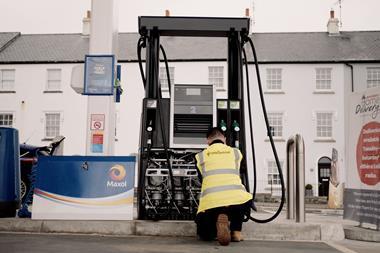
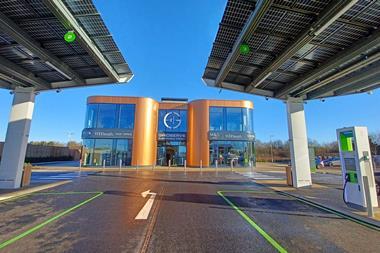
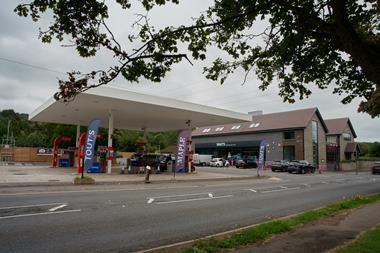
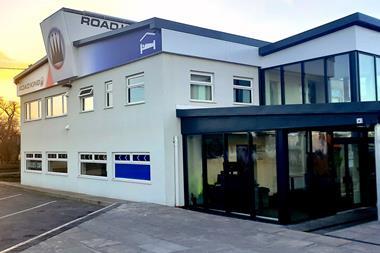

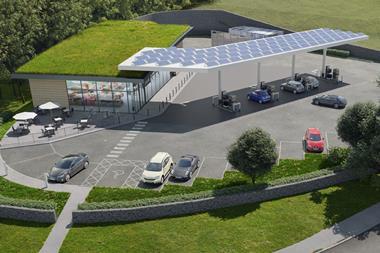




No comments yet